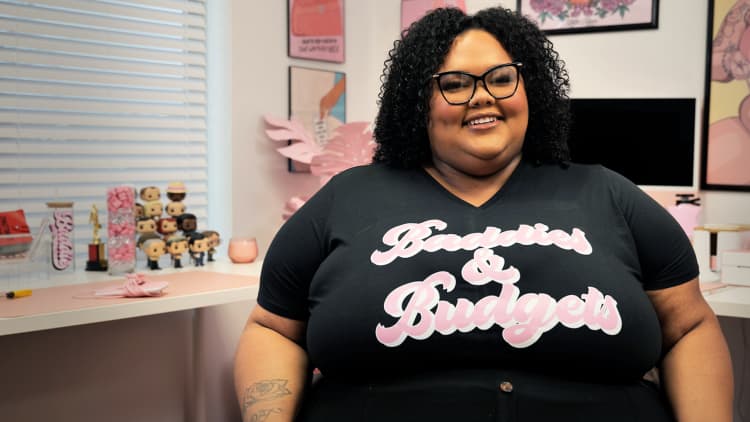If you're like most people, you find that saving money is harder than spending it — especially when impulse purchases are just a mouse-click away.
To help you save money, financial planners recommend following some sort of a budget, like one that follows the 50-30-20 rule. But first making and then sticking to a budget requires discipline and consistency.
Deploying a few mind tricks might help, especially ones that create a little friction in what can otherwise be a too-smooth, too-easy, online shopping experience. For that reason, "avoid the one-click option 100% of the time," suggests Brenna Baucum, a CFP in Oregon.
Here are five ways certified financial planners recommend you help yourself save.
1. Automate your savings
Automatic withdrawals are a great example of the maxim "out of sight, out of mind."
Here's how it works: The day you get paid, a pre-set amount of money is transferred directly from your checking account into separate savings or retirement savings accounts. Most banks let you do this through their website or app. It happens without your having to think about it.
By automating monthly withdrawals, you take care of your savings first. The added benefit is that what's left for spending will be "guilt-free" since "the mile is run before you eat the cake," says Mike Biggica, a CFP in San Francisco.
2. Think of purchases in hours worked, not dollars spent
Another mental trick is to think of purchases in terms of hours worked, rather than dollars spent. That way, an expense is measured in terms of effort and time, which, for some people, can seem more real and tangible.
To do this, you need to know how much you earn per hour, which can be done with a payment calculator if you're a salaried employee.
Let's say you typically make $30 an hour and are tempted to buy a $150 sweater. That works out to five hours of work. Put in hourly terms, would you be willing to work an extra shift at your job in exchange for that sweater?
You still might want the sweater, sure. But thinking about it in terms of effort can help you decide whether any purchase is truly worth the cost.
3. Do your spending with cash
You might have heard of cash-stuffing, or the "envelope method" of budgeting, which is popular on TikTok. It involves withdrawing all of your spending money as cash every month and dividing it into envelopes dedicated to different budgeted expenses, like groceries, gas or rent.
Since it's impossible to spend more physical money than you have, using cash is an appealing option for people who struggle with putting too many purchases on credit cards.

However, a cash-only approach might be impractical for transactions like rent or utility bill payments, since they're usually paid for using checks or credit cards. For that reason, consider a cash-only approach for monthly discretionary expenses only, like eating out, clothes shopping or entertainment.
As the month goes along, you'll know exactly how much money you have left, and you can redistribute the total amount as needed, if you're short on cash in a given category. Any excess cash leftover at the end of the month can be added to savings or rolled over into the next month.
4. Do a spending cleanse
A spending cleanse or no-spend challenge is when you don't spend money on anything other than absolute necessities like rent or groceries. Whether that's for a week, a weekend, or a month is up to you.
The challenge is best-suited for people that have overspend or struggle with impulse shopping. It's less effective for people or families who are already budgeting down to their last dollar.
The immediate benefit is that you'll save money. But perhaps more importantly, a spending cleanse will force you to resist the daily temptation to spend, especially on impulse purchases. This encourages a more mindful approach that can help break bad spending habits even after the cleanse is over, says Melissa Walsh, a CFP in Florida.
Spending cleanses also encourage new zero-cost habits, like using the local library instead of buying books, or taking a hike outdoors rather than going to the movies or a bar.
5. Wait 24 hours before making big purchases
To curb impulse shopping, financial planners commonly recommend waiting at least 24 hours or 48 hours before making big purchases. By making yourself pause, you'll have more time to think about whether the item is really worth the cost.
What defines a "big purchase"? One that requires about 1% of your income, generally. That means that someone making $60,000 would have a 24- or 48-hour waiting period to buy something that costs $600.
This trick works well for online purchases, says Baucum: "You'll be surprised by how much you remove from your Amazon cart, if you look at it again the next day."
DON'T MISS: Want to be smarter and more successful with your money, work & life? Sign up for our new newsletter!
Check out: 6 things to do with your tax refund other than spend it right away



